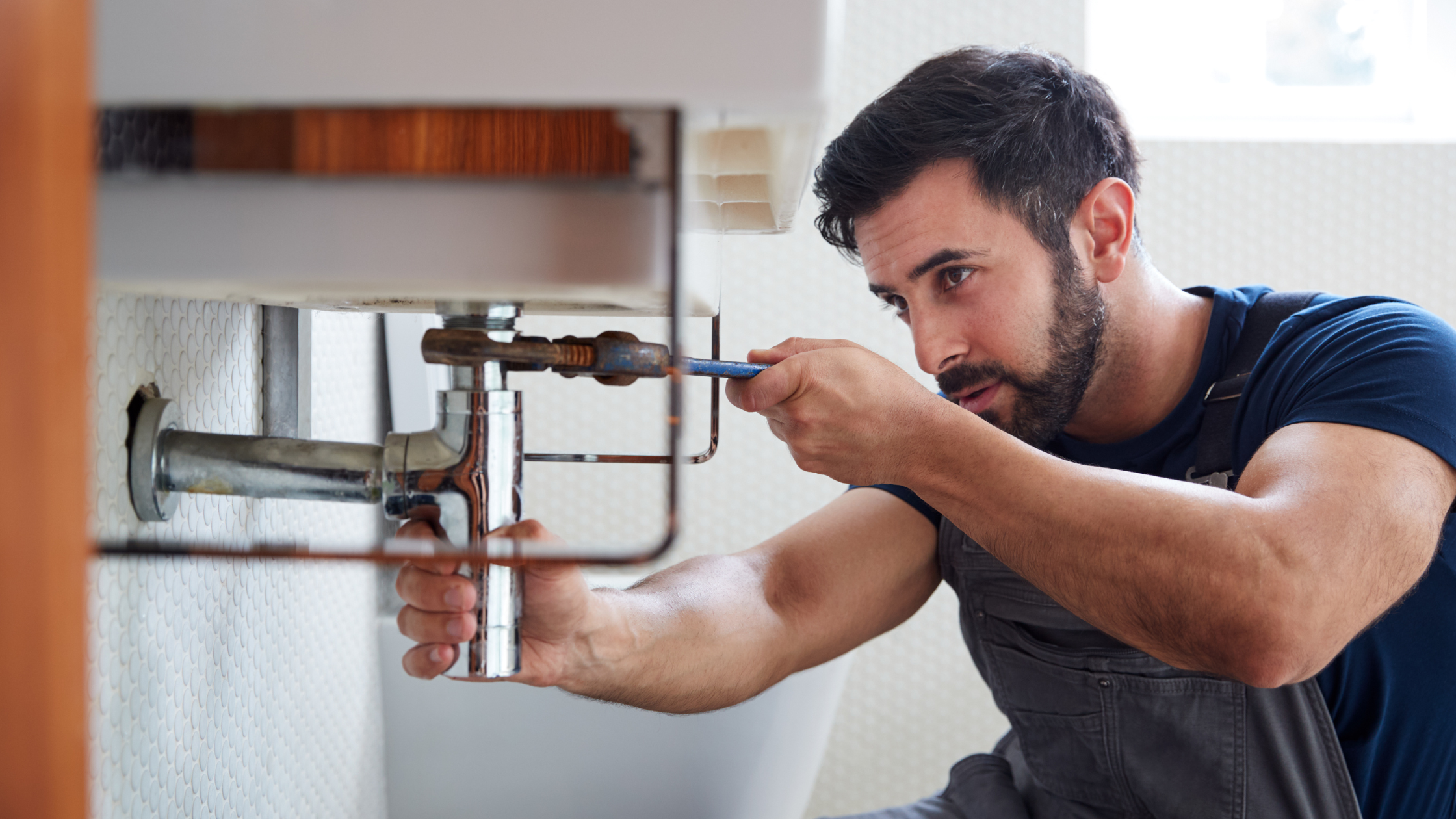Reducing repeat call outs in facilities management should focus on moving away from reactive maintenance and moving towards proactive maintenance. Emergency or frequent call outs are a drain on staff, resources, and the budget. Using preventive and predictive facility maintenance can reduce call out frequency and improve overall operational efficiency.
Table of Contents
4 KPIs to watch to reduce repeat call outs
Why are repeat call outs a problem?
Strategy on how to reduce repeat call outs
What is a repeat call out?
A repeat call-out is when a technician is called out for the same issue more than once.
This could be because the issue was not resolved during the first call out, a 'quick fix' was used, or the problem was fixed, but the same fault recurs.
What causes repeat call outs?
There isn't just one reason call outs occur. But when they build up, they can cause bigger problems.
-2.png?width=2240&height=1260&name=Blog%20images%20(3)-2.png)
Incomplete or temporary fixes
The initial repair only addresses the symptom of the problem, not the root cause. This leads to the issue recurring shortly after. Temporary solutions might offer short-term relief, but they often mask deeper faults that worsen over time, ultimately requiring more extensive repairs.
How to reduce temporary fixes?
Finding the root cause of an issue, rather than settling for a quick solution, will prevent temporary fixes. You'll need to do diagnostics with the service history. Your technicians will need to follow standardised repair procedures.
Using predictive and preventive maintenance helps anticipate faults before they worsen, while consistent communication, feedback, and post-job reviews ensure continuous improvement.
Lack of proper tools or parts
A technician arrives unprepared, without the necessary equipment or materials to complete the job on the first visit. This forces a return trip once the correct parts are procured. Inefficient inventory management or poor planning can also contribute to delays, increasing costs and frustrating both customers and staff.
How to reduce wrong tools and parts?
Better planning, communication, and inventory control ensure technicians are equipped with the correct materials before visiting a site.
This can be achieved by integrating real-time stock tracking, improving work order management, and coordinating closely between planners, stores, and field staff. Proactive parts management and accurate forecasting help ensure the right items are available when needed, reducing costly return visits and customer frustration.
Inadequate information
The initial work order or call-out request lacked a detailed description of the problem. This can cause the technician to misdiagnose the issue or be unprepared for what is needed. When data from previous visits or asset history isn't available, the technician must rely on guesswork, which reduces the likelihood of a first-time fix.
How to reduce information gaps?
Inadequate information on work orders leads to misdiagnosis, wasted time, and repeat call-outs. To prevent this, clear and accurate data must be captured at every stage, from the initial report to technician dispatch. Providing detailed fault descriptions, photos, and access to asset history enables technicians to arrive fully prepared and able to make informed decisions. Integrating systems and improving communication between call handlers, planners, and field staff ensures critical details aren't lost, improving first-time fix rates and overall service levels.
Poor communication
Miscommunication between the call centre, dispatcher, and technician can lead to confusion about the issue, location, or needed equipment. Poor communication with the tenant can also lead to misdiagnosed problems. Clear and consistent communication at every stage of the service process helps prevent misunderstandings and ensures all parties are aligned on expectations.
How to reduce poor communication
Poor communication among call centres, dispatchers, technicians, and tenants often leads to confusion, delays, and repeat call-outs. To reduce this, information must flow clearly and consistently throughout the service process. Establishing structured communication protocols, using real-time digital tools, and confirming details before and after each job ensures everyone is aligned. Regular updates, feedback loops, and clear communication with tenants help avoid misunderstandings, improve coordination, and enhance the overall customer experience.
Technician skill gaps
A technician lacks the proper training or knowledge to correctly diagnose and fix a complex problem, resulting in an ineffective repair. Continuous professional development and access to updated technical resources are essential to ensure technicians can confidently handle evolving systems and technologies.
How to reduce skill gaps?
Technician skill gaps can lead to misdiagnosis, incomplete repairs, and repeat call-outs. Reducing this problem requires ongoing training, mentoring, and access to up-to-date technical resources. Providing clear competency frameworks, regular performance assessments, and opportunities for skill development ensures technicians can confidently handle a wide range of systems and technologies. When technicians are empowered with the proper knowledge and support, the quality of repairs improves, boosting first-time fix rates and customer satisfaction.
Systemic issues
The problem is a recurring flaw in the product or equipment itself, which cannot be fixed with a simple repair. These underlying issues often require design changes, manufacturer support, or a replacement strategy to resolve permanently, ensuring the fault doesn't reappear.
How to reduce systematic issues?
Systemic issues stem from recurring equipment faults, design flaws, or product defects that simple repairs cannot resolve. To reduce repeat call-outs caused by these problems, facilities teams should focus on identifying patterns, collaborating with manufacturers or suppliers, and implementing long-term solutions such as equipment upgrades or design modifications. Effective data tracking, trend analysis, and proactive replacement strategies help eliminate the root cause, ensuring lasting reliability and fewer repeated failures.
4 KPIs to watch to reduce repeat call outs
Tracking the right Key Performance Indicators (KPIs) is one of the most effective ways to reduce repeat call-outs and improve service performance.
1. First-Time Fix Rate: The percentage of issues resolved on the first visit. An increasing rate indicates higher efficiency.
2. Reactive vs. Proactive Maintenance Ratio: A high ratio of reactive work signals inefficiency. The goal is to see proactive work increase and reactive work decrease. Read more about the benefits of PPM for Facility Managers.
3. Time to Resolution: Track the average time it takes to fix a reported issue. A decreasing trend shows improved service delivery.
4. Maintenance Cost Analysis: Monitor the shift from unpredictable reactive costs to more manageable, planned maintenance expenses.
Why are repeat call outs a problem?
Repeat call-outs negatively impact operations, costs, and customer satisfaction. While sometimes unavoidable, frequent repeat visits are a major sign of inefficiency in maintenance and facilities management.
Increased operational costs
Every repeat visit incurs additional labour, fuel, and material expenses. These costs quickly add up, especially across large property portfolios or high-volume maintenance operations. Underperforming assets often have higher energy consumption, which costs more.
Inefficient scheduling and unplanned return visits also increase wear on vehicles and tools, further straining budgets.
Customer frustration
Tenants or facility occupants become frustrated and dissatisfied when a problem isn't fixed correctly the first time. Repeated disruptions can erode trust and lead to negative feedback or complaints. Over time, poor quality of service can reduce tenant retention rates and damage long-term relationships.
Reduced technician productivity
When technicians spend time revisiting the same issue, their productivity drops. Each repeat visit prevents them from completing new work orders or preventive maintenance tasks. This not only reduces efficiency but can also create backlogs, slowing response times across the organisation.
Reputation damage
Frequent repeat call outs can harm the reputation of the facilities management team or company by suggesting poor planning, lack of expertise, or inefficiency. A pattern of unresolved issues can undermine confidence among clients, tenants, and stakeholders—making it harder to secure renewals or win new contracts.
Strategy on how to reduce repeat call outs
Reduce repeat call outs by implementing facilities management best practices.
Step 1
Analyse your current situation and the data you currently have. In your analysis, you should include important metrics and KPIs such as:
- First time fix rate (FTFR)
- Financial impact of each call out
- The category of each call out (e.g. HVAC, electrical, plumbing, etc.)
Step 2
Implement a Computer-Aided Facility Management software to gain the ability to manage processes such as logging work orders, tracking assets and maintenance schedules. This helps to streamline processes and reduces the likelihood of bottlenecks.
Step 3
Collect an audit of every asset; this must include the asset's location, age and maintenance history. Categorise assets by operational priority so technicians can be scheduled accordingly. Store this on the centralised system to ensure everyone has access.
Step 4
Using the data and setup from your CAFM implementation, automate and schedule preventive maintenance, such as routine inspections and equipment servicing, to prevent failures. Leverage your management system to streamline as many of your processes as possible.
Step 5
Integrate CAFM with your other systems and management tools, such as sensors, IoT and other monitoring equipment. Cloud-based systems provide you with real-time data on the health of your assets on-site and prevent potential failures from becoming big problems.
Step 6
Standardise processes and reporting to avoid unnecessary call outs. Effective communication can improve first-time fix rate, because it means the right team members with the correct equipment and the information they need can be called the first time and the issue is resolved.
Step 7
Train staff on the importance of following processes and identifying the root cause of issues to improve continually.
Step 8
Use data analytics from the CAFM software to generate reports, manage workflow, and track KPIs. KPIs should include: first-time fix rate, Mean Time between Failures, and Maintenance costs.
Step 9
Gathering feedback and making improvements leads is valuable for service providers for enhancing customer experience.
Continue improving
"Expansive FM makes our property issues easier to log, faster to resolve, and more transparent—keeping you, the contractor, and the property team all in sync."
CAFM Manager
More strategies for UK Facilities Managers
What is reactive maintenance?
Reactive maintenance means fixing things only when they break.
This approach focuses on restoring functionality as quickly as possible, rather than preventing the issue beforehand. While it's sometimes necessary for non-critical or low-cost assets, relying too heavily on reactive maintenance can lead to higher long-term costs and more frequent service disruptions.
Use best practices to improve efficiency by using a facilities management system. This strategy blends preventive (scheduled) and predictive (data-driven) maintenance to anticipate issues before failure — improving reliability, cost control, and customer satisfaction.
What is proactive maintenance?
Proactive maintenance is a forward-looking approach focused on preventing equipment failures before they occur. Instead of waiting for breakdowns, organisations use inspections, data analysis, and planned interventions to identify and eliminate the root causes of potential problems.
Can CAFM help in reducing call outs?
A CAFM system reduces call-outs by improving planning, communication, data visibility, and proactive maintenance. It empowers teams to fix issues correctly the first time, prevents breakdowns before they happen, and gives management the insights needed to improve performance and customer satisfaction.
What is FTFR and why is it important?
FTFR (First-Time Fix Rate) reflects how effectively maintenance teams solve problems right the first time. A high FTFR means fewer call-outs, lower costs, happier customers, and stronger operational performance.
How can I calculate FTFR?
It's calculated using the formula:
FTFR = (Number of jobs fixed on first visit ÷ Total number of jobs) × 100
For example, if 90 out of 100 jobs are completed on the first visit, your FTFR is 90%.
.png?width=680&height=700&name=Ai%20page%20module%20(2).png)

